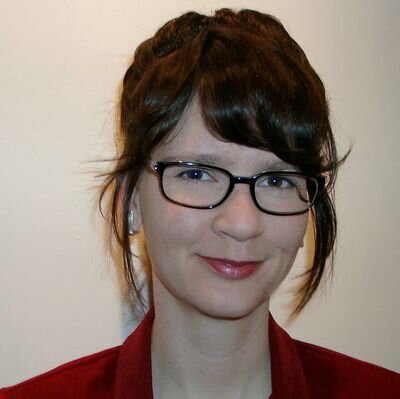“Loci”? “GWAS”? “NEB”? All in a day’s work for Melinda Mills, Nicola Barban, Harold Sneider, Marcel den Hoed, and their colleagues, who recently published a ground-breaking study on the genetic dimension of human reproductive behaviour. Genome-wide analysis identifies 12 loci influencing reproductive behaviour, published in the journal Nature Genetics on October 31st, 2016, sheds light on the role of genes in one of humanity’s most fundamental behaviours—one that must be well understood in order to make good family policy.
We sat down with Melinda Mills to talk about her team’s pioneering work. She explained how they carried out the study and what it means for biology, medicine, and social science.
---
Population Europe: What exactly was the purpose of this ground-breaking work?
Melinda Mills: The specific aims of this study were to identify genetic loci that are related to the age-at-first-birth (AFB) and number-of-children-ever-born (NEB) and examine their biological function.
PE: Why?
MM: A growing number of women today start to have their first and subsequent children exactly at the time that their ability to conceive starts to decrease. Not surprisingly this delay has led to an unprecedented growth in involuntary childlessness. But birth postponement and a lower number of children have been largely attributed to social, economic and cultural environmental factors with virtually no attention paid to the genetic or biological underpinnings of this behaviour.
PE: How does one go about identifying genetic loci related to a specific behaviour?
MM: The primary analysis that we conducted is called a Genome-Wide Association Study, or GWAS. Simply put, a GWAS is a search across the entire human genome, examining each genetic locus, or region, one by one to see if there is a relationship, or what we call an association, between [a locus] and our outcomes, AFB and NEB. Humans are 99.9% identical to each other. It is the 0.1% by which we differ that makes us all genetically unique. A small subset of the 0.1% by which we differ genetically we expect to influence reproductive behaviour. In what is the largest GWAS on human reproduction to date, we combined results from 62 different studies into one meta-analysis with a total sample size of 251,151 for AFB and 343,072 for NEB.
PE: How is this new?
MM: Previous researchers had largely used twin studies to determine how much of a role genes play in predicting human reproductive behaviour. We used the findings generated from the GWAS to explore the potential biological pathway or functions of the genetic loci that we isolated. Simply put, we wanted to determine whether the genes we found had a function.
PE: OK, so what exactly did you find?
MM: We identified 12 independent loci, 10 of which were not previously anticipated to influence reproductive behaviour. We found that all 12 genetic loci combined can explain about 1% of the variability in the average age at which someone has their first baby. We can also predict around 0.2% of the variability in the number of children we will have [over] the course of our lifetime. It may seem low, but the results showed that, for example, the genetic locus with the strongest association alone explains around 38 days in the variation of AFB. That is, any additional ‘A’ allele in this locus delays your age at first birth by 38 days—over a month.
PE: Can these results predict the reproductive behaviour of a random person?
MM: Not at all. Since each individual SNP, or genetic variant, has such a small effect, prediction of AFB or NEB using genetic results alone is not possible. As more genetic data becomes available, we anticipate that it will be possible to predict at most 15 to 20% of the variance in AFB and NEB. It is important to note that even the best social science predictors of AFB and NEB when examined in exclusion also have low predictive power.
PE: In biological terms, what is the most interesting thing you found?
MM: We encountered some very exciting biological follow-up findings Fertility and infertility research often focuses exclusively on women. Our study was unique in that not only did it have a large number of men, but also one of our lead genetic loci was shown to alter the expression of genes linked to lower sperm count and lower quality sperm. It means that infertility treatments may want to start shifting the focus on women to men.
PE: How does the study contribute to the field of demography?
MM: To social scientists we are offering something rare—an entirely new variable.
PE: How about medicine?
MM: Relatively little is known, for example, about the relationship between indicators of women’s reproductive lifespan and reproductive success—or, in other words, ‘how late you can wait’.
PE: Reproductive behaviour, then: nature or nurture?
MM: It is both. Just as complex diseases such as obesity or diabetes are neither purely genetically or socially determined, AFB and NEB are complex outcomes related not only to biological fecundity, but also have a highly behavioural component that is shaped by the social, cultural, economic, and historical environment. Genetic factors influence the first two, with the social and historical environment filtering the types of behaviour that are possible.
PE: Thank you!

Melinda Mills, is Head of the Department of Sociology and Nuffield Professor of Sociology at the University of Oxford.
This interview was conducted by Patrick I. Dick for Population Europe.

The interview is part of the project “FamiliesAndSocieties – Changing families and sustainable societies: Policy contexts and diversity over the life course and across generations”, coordinated by Stockholm University. This collaborative research project is financed in the European Union’s Seventh Framework Programme (grant no. 320116) © Max Planck Society for the Advancement of Science.